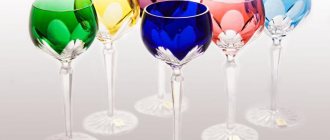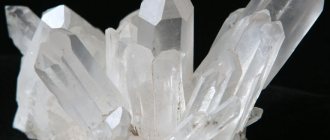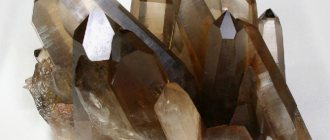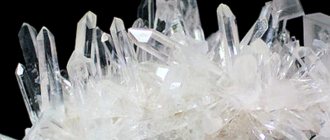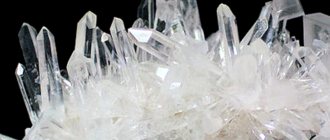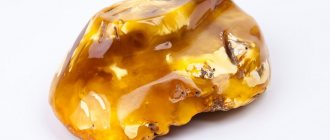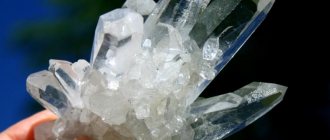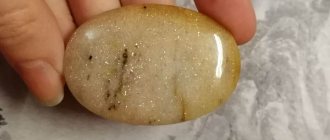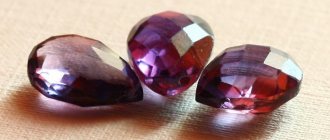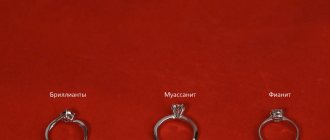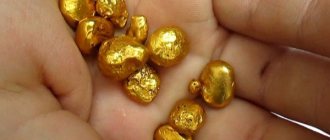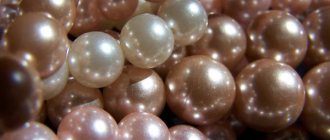There is a huge amount of dishes made from all kinds of materials in the world. But don’t ignore crystal and glassware. Surely there is crystal in your house that you or your parents take out only on important holidays. It looks elegant and luxurious and can decorate a celebration. If you want to add new items to your collection, then before purchasing dishes, familiarize yourself with the differences between crystal and glass. Sometimes entrepreneurs want to earn more money, so they make fakes. In order not to get into trouble, you should read the article to the end.
Crystal
We are all familiar with this word. However, did you know that there are two types of this material: artificial or mountain?
Artificial crystal is a type of glass that contains at least 24% lead oxide. This composition was invented by the English master G. Ravenscroft in 1676. It all started with the fact that in 1615 in England it was prohibited to use wood as a material in all areas of production with the exception of shipbuilding. To keep factories open, coal was used for furnaces instead of wood. Many workers immediately noticed that at high temperatures the glass becomes completely colorless. This was followed by hundreds of experiments with mixing the components and thus the result was artificial crystal - clean, transparent, like a tear.
Crystal has 4 grades:
- Classical. It contains from 24% to 30% lead oxide.
- Low lead. Contains less than 24% PbO.
- Barium. A mandatory component is considered to be at least 18% barium oxide.
- Bohemian. To obtain this variety, glass from potassium and calcium is used.
Rock crystal is a type of natural quartz that has no color. This species is mined in rock cavities, as well as in the voids of lava deposits. It is not used for making dishes, but beautiful jewelry is made from it.
Basic properties of crystal:
- High density (3.6x10³ kg/m³);
- High refractive index;
- Acid resistance;
- Melodious sound.
Budget analogues of semi-precious mineral
In order to reduce the cost of jewelry, manufacturers use analogues of precious and semi-precious stones. Some do it openly, some try to pass off fakes as natural.
To understand how to identify deception in the case of rock crystal, you need to know what they most often try to replace it with. Typical “substitutes” are cubic zirconia and glass rhinestones. The first is artificially grown in the laboratory, and in appearance it resembles a natural crystal and some precious prototypes. The second is glass improved with special additives.
Glass
Depending on the composition of the components, as well as fillers, the material is divided into: regular, quartz, borosilicate, crystal.
The usual ones are lime-sodium, lime-potassium, lime-sodium-potassium. The last two are most often used for high-quality cookware because these types of glass are more heat resistant. They have increased chemical resistance. Used in the production of windows, glass containers and tableware.
Quartz - the raw material is silicon dioxide, which imparts heat resistance. There are 2 varieties: transparent and milky matte. The haze is due to the fact that when melted, it is impossible to remove all air bubbles from the paste. The properties are no different from the first grade.
Borosilicate (also known as Pyrex) contains a significant portion of silicon dioxide and boron oxide, as well as a small amount of alkali metal. The composition gives strength and thermal resistance to the material.
Crystal is the highest grade of glass, which contains a small percentage of lead oxide. Refracts light strongly, like real crystal.
Main properties of glass:
• Density; • Durability. Created thanks to oxides; • High hardness of quartz and borosilicate glass; • Fragility of the material. No matter how hard you try to increase shock resistance, you shouldn’t deliberately throw dishes on the floor and hope that they will remain intact; • Transparency of the material; • Heat resistance.
Quality checking
In high-quality crystal there are no air bubbles, cloudiness or foreign inclusions. Its structure is always dense and uniform.
It is quite easy to distinguish crystal from glass if you know all the nuances. However, the choice of which material to use depends only on personal preferences and capabilities.
in the photo: glassware
In the photo: glass vase
In the photo: glass vase
02/17/2021 4340 go to sections
Crystal glass and its differences from crystal
Initially, crystal glass varied in the content of lead oxide (in the first it was from 13% to 23%), as well as 17% of potassium oxide. Nowadays this type is classified as a type of crystal. Today, the main raw materials for producing crystal glass for making tableware are silicon and titanium instead of lead. After all, many scientists have proven that lead has an adverse effect on human health.
However, do not panic and throw all the crystal glassware into the trash bin; this “dangerous element” loses its harmful properties when it reacts with the oxide. The materials are similar in characteristics, but real crystal refracts light more strongly and has a clear melodic sound.
Other Features
It is quite difficult to make fine engravings on glass. That's why they are cast. Crystal lends itself well to engraving, so the edges of such products are clear and have strict geometry. This enhances the refraction of light and allows you to achieve that very crystal shine. The play of light largely depends on the subtlety of the design. The more elegant it is, the more beautiful the iridescence will be.
Thickness
Glass goblets have thick walls. This increases the durability of the cookware. Crystal glasses are distinguished by their elegance and thin walls, which is achieved due to the plasticity of the material.
Price
Crystal dishes cannot be cheap. This is due to the peculiarities of production, the complexity of the form and the peculiarities of decoration.
Differences between crystal and ordinary glass
- Crystal dishes are heavier than glass. The first and easiest way is to check the weight of approximately identical glasses. Find similar ones in the display case and pick them up. If it is crystal, it will be heavier.
- Crystal is colder than glass. It is easy to compare the temperature of dishes under the same conditions. Just place your hand and hold for a few seconds. Crystal is cooler and does not heat up from the hand, unlike glass. This is due to the fact that crystal glassware has low thermal conductivity.
- Crystal is harder to break than glass.
- When broken, crystal crumbles into small fragments, and glass into large ones.
- No air bubbles in crystal glassware. You will most likely see them in glass, but not in real crystal. This is due to the fact that the latter material does not contain foreign inclusions.
- Made on glass objects. If you look through the material and see flow lines, then you have glass in your hands.
- Crystal bifurcates objects, and glass magnifies them. This is another simple way to determine the material at home. Look through this dish into the distance at objects.
- Different sound. Crystal glassware is characterized by a growing, sonorous, clear and prolonged sound with the usual light blow of two glasses, as well as when held with a wet finger. Glassware does not have such a sound; when struck, the sound will be dull, creaky and short.
- Light refraction. To identify crystal, look at it through the sun's rays. If this is real material, then you will see the iridescence of all the colors of the rainbow on the edges of the product. Glass does not have such properties, so it will not please you with a variety of shades.
- Crystal dishes are more expensive than glass.
How does cubic zirconia differ from natural crystal: what are the signs to identify a fake?
Cubic zirconia is cubic zirconium oxide. Has nothing to do with breeds of natural origin. It was originally developed for industrial use in one of the scientific laboratories of the USSR. Over time, it was put into mass production due to its maximum resemblance to a diamond, and with the addition of coloring pigments to other precious and semi-precious stones with the exception of emerald.
Artificial cubic zirconia is inexpensive and effective. It is actively used in jewelry. Only a completely “inexperienced user” can confuse natural rock crystal with cubic zirconia. The difference is visible to the naked eye. Firstly, cubic zirconia does not refract color as actively. It looks so crystal clear and transparent that its unnaturalness is beyond doubt. In addition, the crystal is more fragile and not as cold as a mountain mineral.
If it is impossible to analyze external signs, as well as check the authenticity based on tactile sensations, study the product label. After the name of the stone, there should be a postscript cz on the tag - it indicates the replacement with cubic zirconia.
Varieties of rock crystal
When answering the question of how exactly crystal differs from ordinary glass, you need to familiarize yourself with its varieties. There are the following mineral options:
- Amethyst is a purple gemstone that contains veins. It has a smoky tone. This mineral is characterized by magical characteristics. It helps cope with alcohol addiction and improves a person’s mental state.
- Smoky quartz is a brown crystal with a grayish tint.
- Morion - may have a brown or black color.
- Yellow Citrine is a rare variety characterized by a yellow tint.
- Hairy quartz is a white smoky gem. It is characterized by golden veins, similar in appearance to hair.
What are natural crystal and glass?
Glass is a synthetic material. It is made from artificial fibers. There are also natural materials that help create very beautiful glass. However, they are extremely rare. Moreover, the material will cost significantly more than synthetic analogues.
Crystal is considered a crystalline material that is of natural origin. It is a colorless type of quartz. A distinctive feature of the material is its attractive appearance and high price.
Note! Many people collect crystal. Shot glasses, glasses, vases made from this material are carefully stored and passed on by inheritance.
Where is Bohemian glass made?
Bohemian glass (Bohemian glass) is blown glass, which is produced according to ancient traditions in the Czech Republic. Bohemian glass was first mentioned in chronicles in 1162.
Interesting materials:
What to feed a Scottish kitten at home? How to attach it to slate? What is the best way to catch crucian carp? What is the best treatment for powdery mildew? What is the best way to clean the floor from germs? What is the best way to cut extruded polystyrene foam? What is the best way to cut foam lengthwise? What is the best way to temper the sword of darkness? What is the best way to cover holes in the wall? How can calcium oxide interact?
How to choose quality crystal
Many people are interested in how to identify crystal. To check the quality of the material, you should pay attention to the following:
- Strength parameters. A glass object is quickly subjected to mechanical stress and loses its original appearance. At the same time, natural crystal is difficult to scratch. Even the use of a hard sponge will not deteriorate the appearance of the product. It is also worth considering that glassware breaks into large fragments, and crystal into small ones.
- Structure of the material. To determine it, you should take a magnifying glass and examine the product under high-quality lighting. Crystal is completely transparent. It does not contain bubbles, cracks or clouding. Glass products often include small bubbles. They may also consist of darkening. This difference is due to the techniques used to make the tableware.
- Visualization effect. The glass is a kind of magnifier. If you look through a glass at any object, it will appear a little larger. You can recognize crystal glassware by its large refraction angle. In this case, the image turns out to be double.
- The sparkle of crystal. If you look at the dishes in the light, you can see that they play with rainbow highlights. This is more typical for models with edges. However, the glass does not shine like that. It is not characterized by refraction of rays.
- Price. This parameter is not always reliable. Making crystal is considered a very expensive process. However, glass products that have been made by hand can cost even more.
Crystal and glass have a number of differences. The difference lies in the structure, shine, and strength indicators. These parameters must be taken into account when purchasing crystal products. This will help you avoid purchasing a fake.
Properties of crystal
The properties of rock crystal are determined by the composition of the mineral and the absence of metal impurities. Distinctive features of the mineral:
- prismatic crystal shape;
- unclear cleavage along the rhombohedron;
- trigonal system;
- transparency;
- colorlessness;
- high strength;
- hardness on the Mohs scale - 7 points;
- density indicator - 2.64 g/cm³;
- conchoidal or uneven fracture;
- glass shine;
- resistance to acids;
- high degree of refraction.
In Russia, the mineral is found naturally in the Urals, Yakutia, Primorye and Transbaikalia.
What is artificial crystal made from?
Synthetic glass is made from quartz sand. It is heated to parameters of 1600 degrees or even more. As a result, the particles fuse. As they cool, they do not have time to return to their original state. The material includes more than just sand. It may contain soda, metal oxides, and lime.
Crystal refers to a type of glass that contains a lot of lead oxide. This additive allows the material to refract light and spread it into light rays. As a result, it is possible to create a play of light. At the same time, the material not only looks very attractive. Due to the presence of lead oxide in the composition, the substance becomes unusually plastic. Therefore, crystal can be carved and cut.
How to check crystal or glass?
Now look carefully at the structure of the product itself. Glass, even expensive brands, is made in a special way, so it contains very small bubbles. That is, in some places, the glass is a little cloudy. This does not happen with crystal, because it is made using a completely different technology, which allows us to obtain the most plastic and malleable material. That is, crystal is more homogeneous in its structure and does not contain any inclusions. That is, when looking through crystal glasses, you will not notice any bubbles or scratches.
Crystal is denser than glass. Accordingly, it is much less susceptible to scratches and darkening, which often happens with glass. Scratches appear quite easily on glass, which cannot be said about crystal. Even if you regularly use hard sponges to wash such glasses, you will not see scratches on them soon. Since the coating itself is quite hard and does not scratch easily. In addition, the thermal conductivity of materials also differs significantly; for glass it is much higher.
Glare of crystal
Homemade ways to distinguish rock crystal from other stones and glass
Rock crystal has long attracted attention with its spring purity.
This stone is a clear, colorless variety of quartz. In ancient times, it was believed that crystals were frozen ice. Jewelers valued it for its hardness and carved amulets and jewelry from the stone, creating true works of art. In the Kremlin, in the Armory Chamber, you can see one of the masterpieces - the samovar of Peter I, carved from a single piece of rock. Today's jewelers also do not ignore this transparent mineral. Quite often you can find inexpensive jewelry where its analogues are used instead of natural stone. Therefore, if you are going to buy rock crystal, you need to be able to distinguish a fake.
